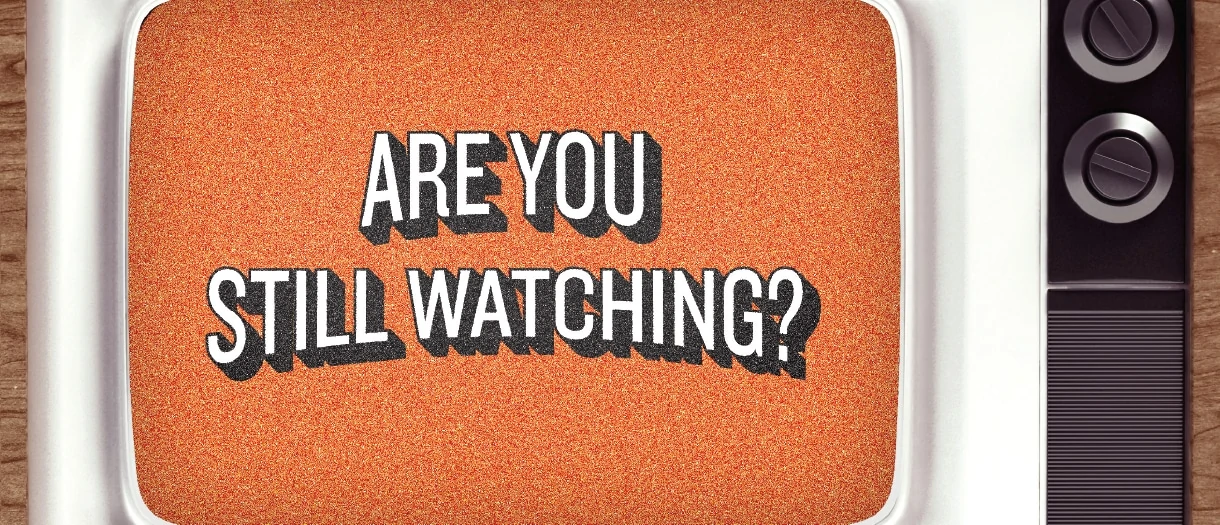Binge-worthy

Streaming services are changing the way we relate to television. Will the 22- or 47-minute episode survive?
Like many dysfunctional behaviours, my slide into binge-watching was sudden and unexpected.
Never a big TV viewer, I found myself with some unexpected free time one evening, and decided to check out Netflix for the back catalogue of Mad Men—a show I had wanted to watch for its first five seasons, but couldn’t stay awake late enough for its Sunday-night broadcast.
So I watched episode one, followed by episode two. And three, and four.
After a few days, I’d averaged four hours of sleep nightly, neglected my son’s homework and let the laundry pile up. But I’d completely devoured five seasons’ worth of artful creative direction, strong scriptwriting and first-rate acting—all the while telling myself I could stop any time. If I wanted to.
When season six premiered on AMC, I was ready for my fix.
And was profoundly disappointed.
Here was this narrative that I’d avidly consumed, uncontrollably devoting dozens of hours of my time to, only to see it in its “native” form, broken out every 20 minutes (or so) into commercials—commercials!—disrupting the flow, distracting my attention and annoyingly increasing the volume. Then, when this one measly episode was over, I was expected to wait a week for the next.
Mad Men via Netflix is a work of art, in which I get to choose how deeply I immerse myself and how many chapters I consume; on AMC, it’s just another TV drama in which the “traditional” (more on “traditional” later) medium of TV calls all the shots: when I can see it and how long I can watch without interruption.
The only way out? Start watching Downton Abbey on iTunes, of course. And it’s all been downhill from there.
It’s official. When we have unlimited access to entertainment, we really can’t help ourselves. According to Nielsen’s 2013 Over-the-Top Video Analysis, most people who use streaming services like to bingewatch: “88 percent of Netflix users and 70 percent of Hulu Plus users report streaming three or more episodes of the same TV show in one day.” (Blogger Rebecca Pahle notes, correctly, that three episodes per day is a “snack,” not a binge, but you get the point.)
Not that this is likely a surprise to anyone. After all, “binge-worthy” is now the term used by cable companies to promote their fall lineup and by entertainment media—from Entertainment Weekly to IMDb—to describe programs best consumed in large doses.
The act of on-demand viewing, binge or not, is also turning any TV-watching into a solo activity that fits into an individual schedule.
Add to that the algorithms that made Seth Godin call Netflix a better curator than any librarian, and a new picture starts to come together.
On reflection, it occurs to me that the Netflix model is closer to a novel, with each episode a chapter—which is how people have consumed entertainment for centuries (at least, those fortunate to be literate; the rest had to be content to hear the weekly instalments of Oliver Twist and Pamela read aloud in the town square).
Substitute the term “binge-worthy” with “page-turner,” and it makes sense. The feeling of binge-watching, in fact, reminds me most of a time when, as a young adult with a voracious appetite for reading, I’d complete a novel in a day, devouring chapter after chapter (“Just one more, then I’ll turn the lights out,” I’d lie to myself), only to emerge, dazed, not even knowing what day or month it was, and needing a few days to shake off the desire to re-inhabit that world.
So, are PVRs, iTunes and Netflix turning television into literature? Could a program’s episodes break out of their set time constraints and act more organic? What if an episode took up as much time as it needed to, much like a book’s chapters can range widely in length? When you consider that Netflix, Shomi and CraveTV are now investing heavily in their own programming, removing the artificial constraints of commercial breaks and network schedules, you have to wonder: why make each episode the same length?
On one hand, we could look at this as a new paradigm for entertainment; we even refer to TV as part of “traditional” media. But, at less than 100 years old, TV is actually a relatively new medium.
Maybe—with its strict scheduling tied into rushing home in time to get together on the sofa with some snacks to tune into a weekly broadcast with a finite beginning, commercial breaks and end—TV was the aberration all along.